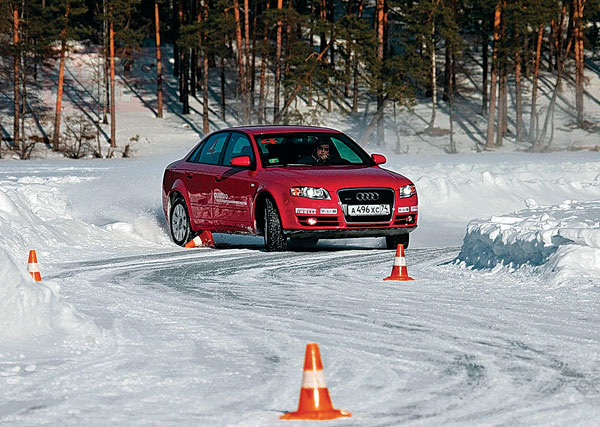Instruction
1
The brake way of the car – the distance that the vehicle passes from the moment the brake system until it stops completely. The length of the braking path depends on the speed of the vehicle, method of braking, and road conditions. For example, at a speed of 50km/h the average braking distance of approximately 15 m and at 100 km/h – 60 m.
2
Note that the brake way of the car depends on many factors such as: speed, vehicle weight, road surface, weather conditions, method of braking, and the condition of the wheels of the vehicle and its braking system.
3
Determine the braking path of the vehicle according to the following formula: S = Ke x V x V/(254 x FS), where
S – a brake way of the car in meters
Ke – brake ratio, which is equal to 1 car,
V – vehicle speed (km/h) at the beginning of braking,
FS – coefficient of grip (different indicators, depending on weather conditions)
0.7 – dry asphalt,
0.4 – wet road
0.2 – Packed snow,
0.1 – icy road.
S – a brake way of the car in meters
Ke – brake ratio, which is equal to 1 car,
V – vehicle speed (km/h) at the beginning of braking,
FS – coefficient of grip (different indicators, depending on weather conditions)
0.7 – dry asphalt,
0.4 – wet road
0.2 – Packed snow,
0.1 – icy road.
4
Please note that there are several different ways of braking, namely: smooth, abrupt or gradual and intermittent. Use smooth braking in a relaxed atmosphere. Perform a gradual increase of pressure on the brake pedal, and this will ensure smooth reduction of speed of the car. It is in this method of braking you get the big brake way.
5
Remember that sharp braking when you strongly press the brake pedal, usually leads to blocking of wheels, and hence to lose control and skid. If you choose the stepped braking, you press on the pedal, but each subsequent press do it with great effort, and so on until a complete stop.With intermittent braking much press on the pedal, almost to the point of wheel lock, and then release the pedal. Follow the same principle before the car fully stops.


